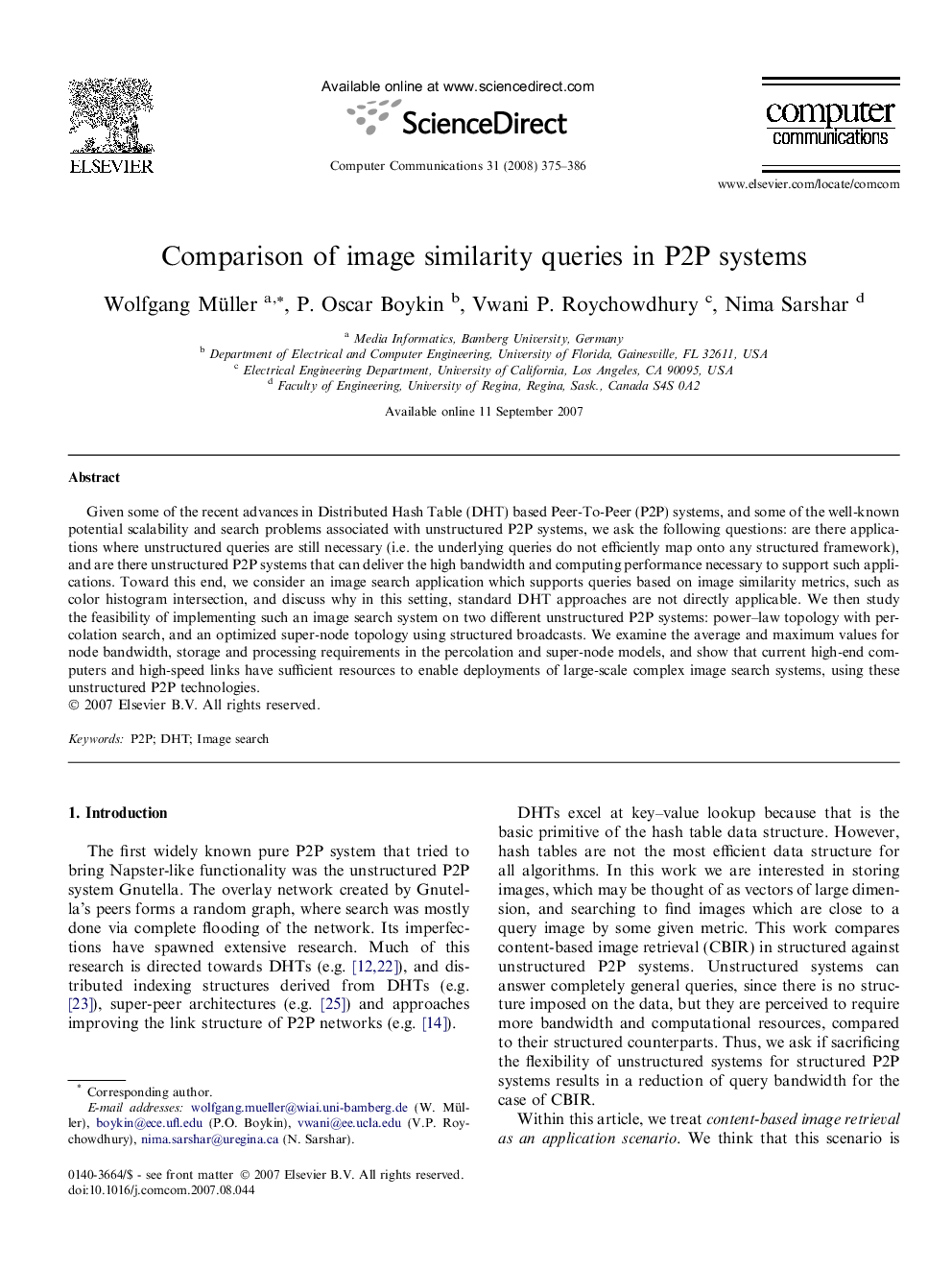| Article ID | Journal | Published Year | Pages | File Type |
|---|---|---|---|---|
| 449360 | Computer Communications | 2008 | 12 Pages |
Given some of the recent advances in Distributed Hash Table (DHT) based Peer-To-Peer (P2P) systems, and some of the well-known potential scalability and search problems associated with unstructured P2P systems, we ask the following questions: are there applications where unstructured queries are still necessary (i.e. the underlying queries do not efficiently map onto any structured framework), and are there unstructured P2P systems that can deliver the high bandwidth and computing performance necessary to support such applications. Toward this end, we consider an image search application which supports queries based on image similarity metrics, such as color histogram intersection, and discuss why in this setting, standard DHT approaches are not directly applicable. We then study the feasibility of implementing such an image search system on two different unstructured P2P systems: power–law topology with percolation search, and an optimized super-node topology using structured broadcasts. We examine the average and maximum values for node bandwidth, storage and processing requirements in the percolation and super-node models, and show that current high-end computers and high-speed links have sufficient resources to enable deployments of large-scale complex image search systems, using these unstructured P2P technologies.
